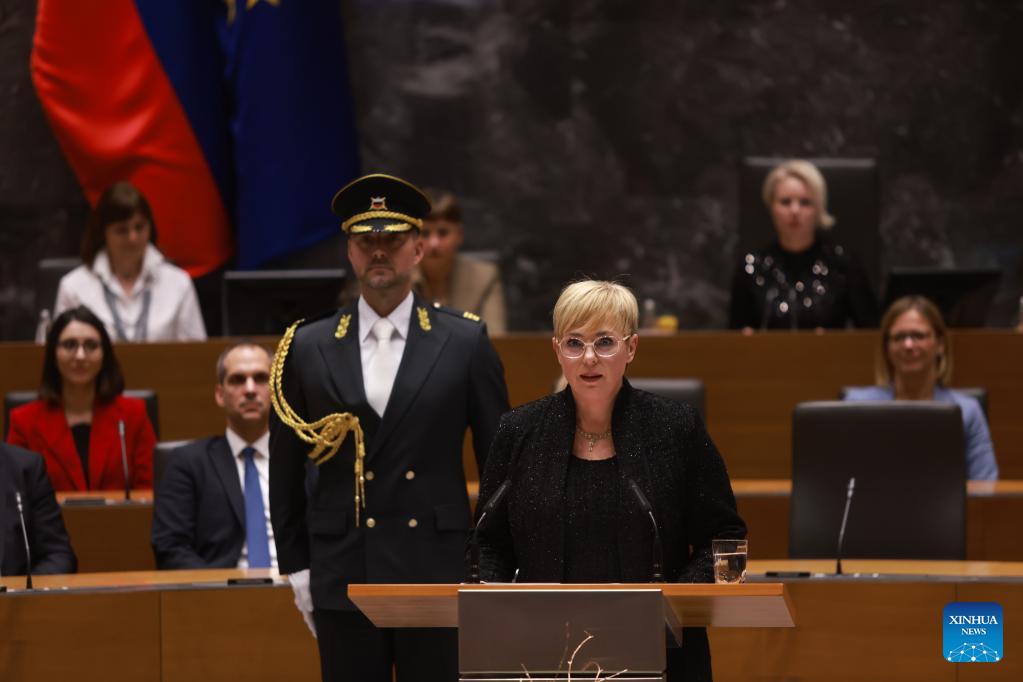
Slovenian President Natasa Pirc Musar (Front) delivers her first presidential speech during a ceremonial session of Slovenia's
National Assembly in Ljubljana, Slovenia, on Dec. 22, 2022. [Photo/Xinhua]
Natasa Pirc Musar, 54, took the oath of office during a ceremonial session of Slovenia's National Assembly on Thursday. She is the country's fifth, and first female, president.
Musar, who ran as an independent, replaces Borut Pahor, who held the post for the past 10 years.
In her first speech as president, she addressed Slovenia's citizens: "We have to take care of our country ... defend it, protect it and love it because it is ours and because of the future generations."
She said she supported a multilateral world order and a strong Europe, and that she saw climate change as the main challenge of our time.
Musar was elected last month. She won 54 percent of the vote and beat her competitor, conservative lawmaker and former Foreign Minister Anze Logar.
Musar is a lawyer, former journalist and former national information commissioner.
Although the role of the president is mainly ceremonial, she is now the commander-in-chief of Slovenia's army. The president also nominates several top officials, including the central bank governor. Most of the nominations have to be confirmed by Parliament.




